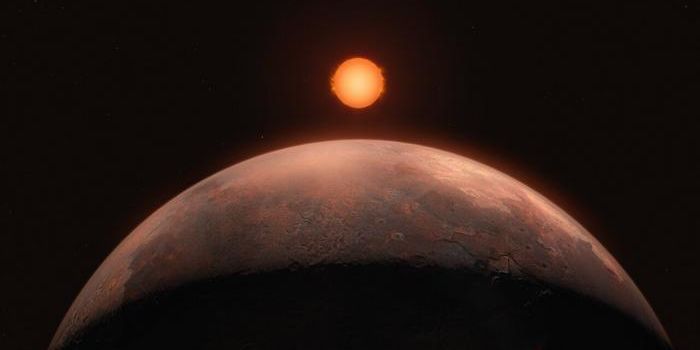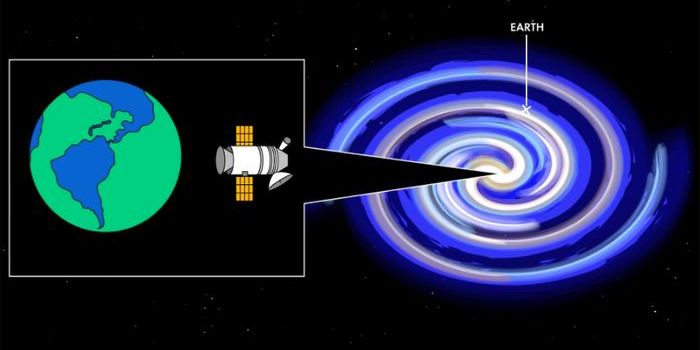Astrobiologists Uncover the Oxygen Bottleneck in the Search for Alien Technosignatures
What are the criteria for an extraterrestrial civilization to become a technological species? This is what a recent study published in Nature Astronomy hopes to figure out as a team of international researchers examine how oxygen plays a role in technological advancement, specifically pertaining to it being a necessary requirement for producing fire. This study was partially funded by a NASA grant and holds the potential to help researchers better understand the criteria for identifying technological signatures of extraterrestrial intelligence, also known as “technosignatures”.
Illustration depicting how higher atmospheric oxygen levels could lead to technoligcal advancement for an extraterrestrial species, specifically pertaining to the creation of fire. (Credit: University of Rochester illustration / Michael Osadciw)
“You might be able to get biology—you might even be able to get intelligent creatures—in a world that doesn’t have oxygen, but without a ready source of fire, you’re never going to develop higher technology because higher technology requires fuel and melting,” said Dr. Adam Frank, who is Helen F. and Fred H. Gowen Professor of Physics and Astronomy at the University of Rochester and co-author on the study.
For the study, the researchers analyzed the atmospheric oxygen levels on Earth throughout the planet’s approximate 4.6-billion-year history and compared that with times of technological advancements such as metallurgy, or the production purification of metals. In the end, they determined that such advancements only occurred when atmospheric oxygen levels achieved or surpassed 18 percent. For context, the current atmospheric oxygen level for Earth is approximately 21 percent. Therefore, the researchers concluded that technological civilizations will only be identified if their planet exhibits a specific level of atmospheric oxygen.
“The presence of high degrees of oxygen in the atmosphere is like a bottleneck you have to get through in order to have a technological species,” said Dr. Frank. “You can have everything else work out, but if you don’t have oxygen in the atmosphere, you’re not going to have a technological species.”
This study comes as the number of confirmed exoplanets has exceeded 5,500 and the SETI Institute continues its decades-long search for identifying radio signals from an extraterrestrial civilization somewhere in the cosmos.
What new discoveries will researchers make about searching for technosignatures in the coming years and decades? Only time will tell, and this is why we science!
As always, keep doing science & keep looking up!
Sources: arXiv, EurekAlert!, University of Rochester, NASA









